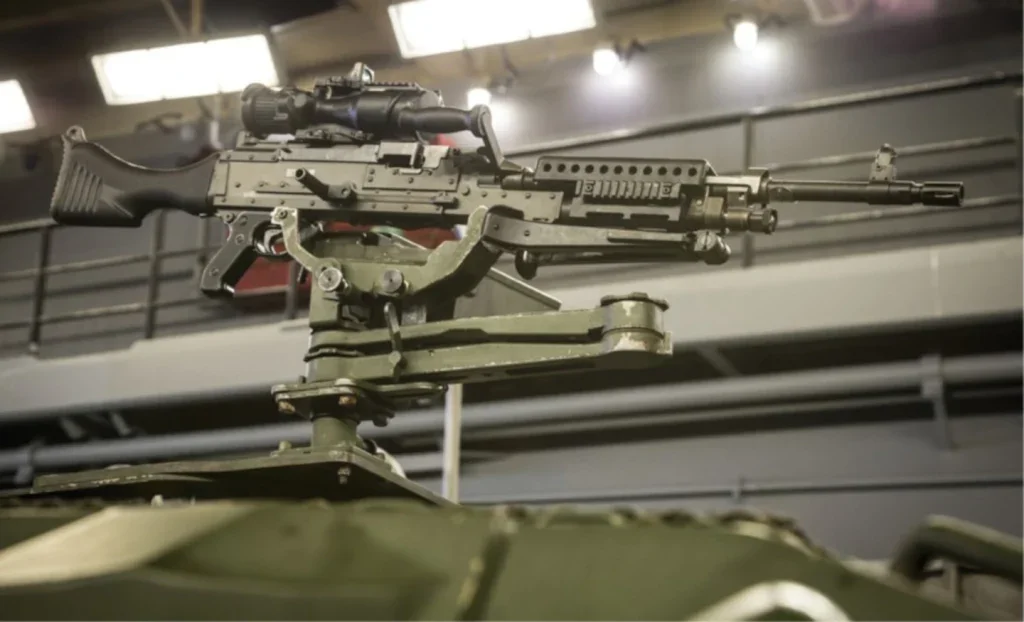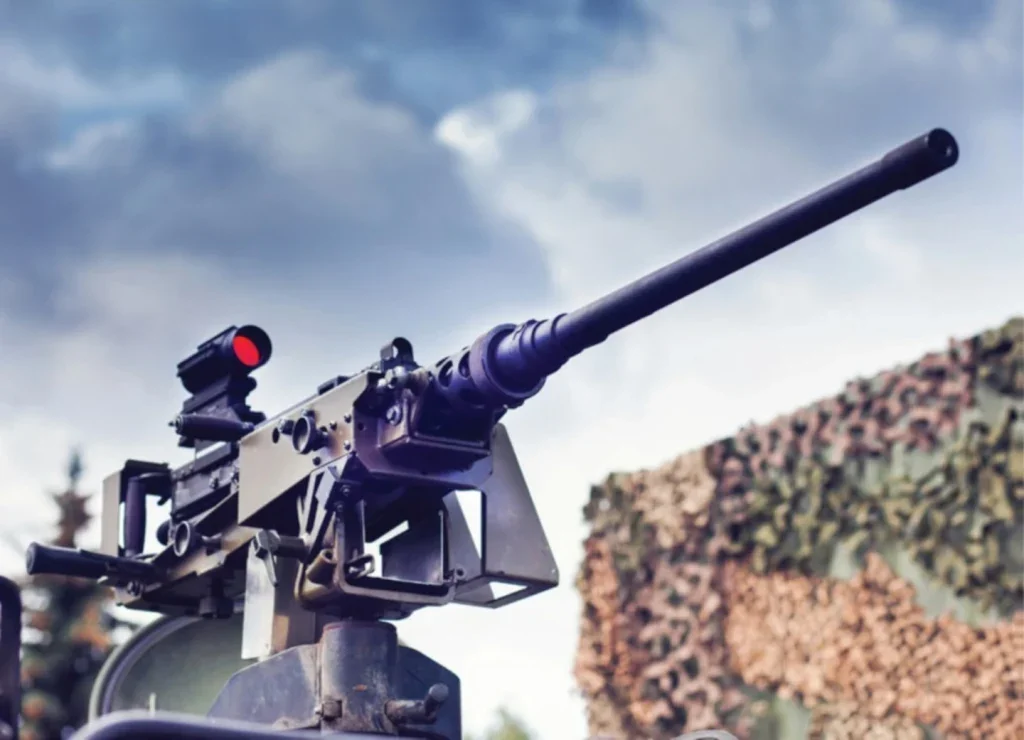
Night vision. Suppressors. Backpacks. Advanced sniper scopes. Effective special forces operations would be impossible without them, and no wonder. Operating in high-risk environments, tasked with complex missions that can turn the tide of a conflict, and often alone with minimal support, special forces are highly dependent on a refined skill set – coupled with cutting-edge technology.
With the return of high-intensity conflict in many parts of the world, not least Ukraine, special operations are intensifying. The effectiveness of these operations relies on a host of systems for command-and-control in heavily contested environments, communications and connectivity, as well as unmanned robotics and the latest weapons systems.
“Special operators often work in austere environments far from the nearest friendly forces,” says a spokesperson from US Special Operations Command (SOCOM). “They can’t always rely on the logistical or fire support of their conventional counterparts. Their physical footprint most often must be very light. Because of this, each piece of equipment they take on a mission must be highly effective, or they simply won’t take it.”
When there is so much at stake, no compromise can be made on the quality of any equipment. “Compensating for quality with mass is not something special operators do,” our source explains. “SOCOM’s team works closely with government, academia, and industry to meet its mission to provide rapid and focused acquisition, technology and logistics support to warfighters, delivering the most effective capabilities to our Special Operations Forces.”
Nato’s defensive alliance is facing complex challenges – assertive authoritarian regimes, terrorism, cyber and missile threats, climate change and disruptive technologies. In response, Nato is undertaking its largest adaptation with the Deter and Defend Family of Plans (DDA) so forces can maintain their technological edge.
“The global security environment is challenging, and technological innovation is essential for allies to improve their defences and resilience,” says a spokesperson for Nato’s allied Special Operations Forces Command (SOFCOM). “This is especially true for allied special forces, for whom access to the latest technological developments is a force multiplier. It significantly impacts their effectiveness in executing missions.”

Continuous investment in research, development and integration of cutting-edge technologies is crucial to maintaining a competitive advantage on the battlefield. Nations are investing in advanced technologies that allow special operation forces (SOF) to operate covertly and in support of other troops. “With the evolving security threats,” the SOFCOM representative adds, “we need to be forward-thinking in our innovation and work with industries to support advanced intelligence, surveillance, reconnaissance platforms and other SOF activities.”
Many of today’s technological advances are datadriven and aimed at improving situational awareness on the battlefield. Operators equally place greater emphasis on tactical communication systems, providing secure and resilient connectivity for special forces. Nevertheless, the key piece of equipment for any special forces operative is much more basic: it is their weapon.
10,000
The number of new L403A1 weapons that could be procured by British forces over the next ten years.
UK Ministry of Defence
Upgrading the light machine gun
Even in the age of automated drone technology, where sophisticated solutions are enabling remote engagement with adversaries, small arms represent the foundation of any soldier’s kit. “Drones are among the most effective tools in modern warfare – they are remarkably effective, inexpensive and require minimal training and support,” notes SOFCOM. “They can, however, also have a paralysing effect on people and the sense of insecurity they create is a significant concern.”
It is no surprise, therefore, that the US military is in the process of developing a new machine gun, due to go live in 2026, alongside a range of advanced supporting systems to improve the accuracy, lethality and effectiveness of its special forces. Advances in technology, both in weapons and personal protection systems such as body armour, have compelled US forces to modernise their small arms, especially when China and other strategic competitors are busy equipping the US’s enemies on the battlefield.
These fears are reflected by the US Army’s top brass, with Lt Col John Lancaster, programme manager for US SOCOM, wondering at last year’s SOF Week if “toe to toe with an enemy weapons system, does our weapons system outrange it? Is it more accurate? If you look at what we have on the battlefield right now, we can’t say that in every category.”
With these challenges in mind, it’s no wonder that the Pentagon has developed a range of weapons for its special forces teams. US SOCOM’s new lightweight machine gun – medium, or LMG-M – is intended to fill a role between the current systems: the M240B (7.62x51mm) and the Browning M2 (.50cal).
The M240B is a general-purpose machine gun that can be mounted on a bipod, tripod, aircraft or vehicle. It is belt-fed, air-cooled, gas-operated and fully automatic, and has proved effective in delivering medium support fires as a replacement for the ground-mounted M-60 series. The Browning M2, for its part, is an automatic, recoil-operated, air-cooled machine gun. Over short distances, it can be carried by troops alongside a limited amount of ammunition.
“Both of these systems are still effective and relevant,” SOCOM explains, “but we think that the LMG-M has the potential to deliver similar effects on target as the M2 heavy machine gun, albeit in the size and weight of the smaller M240B and with greater accuracy when desired. The most apparent benefit of this would be that one could carry a weapon with similar firepower of a .50cal on a foot patrol.”
Each weapon fielded by US special forces has a specific role. The range, accuracy and effects on target are tailored to make that weapon an effective tool. Weight is always a prime concern for the special operator, too, so careful consideration must be given to the trade-offs of range, accuracy and effects because these nearly always have an inverse relation to weight.
The LMG-M, for its part, will come with a suite of accessories to help improve range, accuracy and lethality. It is likely to have a dedicated optic to improve its effectiveness against distant targets, though details are not yet available. The same is true of night rangefinders for snipers. A lighter-weight model weapon – the so-called Lightweight Machine Gun-Assault’ – is in development too. Ultimately, it could replace the ageing 5.56mm Squad Automatic Weapon.
According to SOCOM, the special forces are also looking at new suppressors to reduce flash, sound, heat and round disturbance on its range of small arms. As the new weapon will be effective at ranges beyond those of the M240B, there is a need for both day and night optics, as well as updated laser markers and range finders.
“Suppression technology is continually improving, and we intend to field the most effective one we can with the system,” the SOCOM representative explains. “We’ll need the full suite of ammunition and modern advances. For example, we’ll need tracers, or something similar, to allow a gunner to see where his bullets are impacting at great range in both daylight and dark, and preferably without giving away the position of the gun.”
Best of British
American efforts to equip its armed forces with new and improved small arms are being echoed elsewhere. Across the Atlantic, for instance, British troops will soon benefit from a £90m contract to deliver modern, high-precision rifles. Initially deployed by the Army Special Operations Brigade (ASOB), which operates in high-threat environments, the new Alternative Individual Weapon (AIW) system will be a step up in lethality, while sight and hearing signature reduction bolster its discretion.
The AIW, also known as the L403A1, is a highperformance development of the ArmaLite Rifle (AR). It will be procured by Defence Equipment & Support (DE&S) under the so-called Project HUNTER scheme. Consisting of a new assault rifle, a muzzle signature reduction system and improved optical sighting systems, it’ll be both more reliable and more accurate than existing systems.

For Nato as a whole, the development of new small arms is down to individual members. “Small arms innovation is a crucial aspect of enhancing soldiers’ operational effectiveness and adaptability,” remarks SOFCOM. “They play an indispensable role in counterterrorism and hybrid warfare, and technological advancements allow us to address those unique challenges posed by those threats. For allied SOF, it is important that each nation determines its priorities regarding small arms improvement to achieve the best possible results.”
Whatever the weapons, meanwhile, innovation in other areas can’t slow down either. For instance, SOCOM stresses that it is not focusing more on small arms than on drones and precision-strike system. All the same, it continues efforts to maintain a competitive edge in small arms – unsurprising when they’re so lightweight, costeffective and reliable.
“The standards of reliability for weapons and ammunition are far more strenuous than almost any other system of which I can think,” notes our source. “When all communications are jammed or an electro-magnetic pulse has rendered all other technology ineffective, the machine gun and battle rifle are still going to work, and we can rely on our special operators to carry on with the mission.”
3,725m
The maximum range of the M240B machine gun currently used by US Special Forces.
As that last comment implies, highly trained warfighters are just as vital as the weapons they hold. To put it differently, whatever innovations ultimately make their way into the LMG-M package, there is an implicit understanding that the weapon is just a tool – and that nothing is more important to the outcome of a mission than the person holding it.
6,800m
The maximum range of the M2 .50cal machine gun currently used by US Special Forces.
www.Military.com
“Humans are more important than hardware – that has always been the first SOF truth,” SOCOM says. “The most important weapon system of Special Operations Command is the special operator. All of the technologies we bring to the fight must work as a system to support the human that is accomplishing the mission.”



